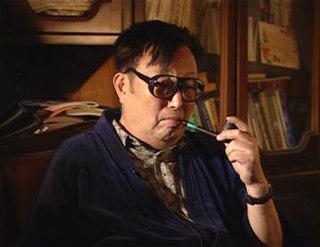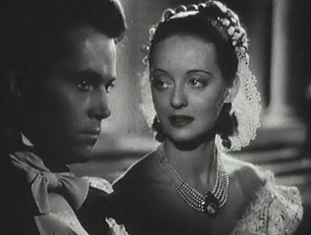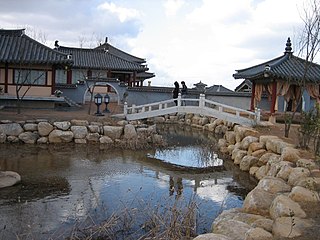
A film genre is a motion-picture category based on similarities either in the narrative elements or in the emotional response to the film. Most theories of film genre borrow from literary-genre criticism. Each film genre is associated with "conventions, iconography, settings, narratives, characters and actors". Standard genre characters vary according to the film genre; for film noir, for example, standard characters include the femme fatale and the "hardboiled" detective; a Western film may portray the schoolmarm and the gunfighter. Some actors acquire a reputation linked to a single genre, such as John Wayne or Fred Astaire. A film's genre will influence the use of filmmaking styles and techniques, such as the use of flashbacks and low-key lighting in film noir, tight framing in horror films, fonts that look like rough-hewn logs for the titles of Western films, or the "scrawled" title-font and credits of Se7en (1995), a film about a serial killer. As well, genres have associated film-scoring conventions, such as lush string orchestras for romantic melodramas or electronic music for science-fiction films.

Italian neorealism, also known as the Golden Age, is a national film movement characterized by stories set amongst the poor and the working class, filmed on location, frequently using non-professional actors. Italian neorealism films mostly contend with the difficult economic and moral conditions of post-World War II Italy, representing changes in the Italian psyche and conditions of everyday life, including poverty, oppression, injustice, and desperation.

Douglas Sirk was a German film director best known for his work in Hollywood melodramas of the 1950s. Sirk started his career in Germany as a stage and screen director, but he left for Hollywood in 1937 because his Jewish wife was persecuted by the Nazis.

A melodrama is a dramatic work wherein the plot, which is typically sensational and designed to appeal strongly to the emotions, takes precedence over detailed characterization. Melodramas typically concentrate on dialogue, which is often bombastic or excessively sentimental, rather than action. Characters are often simply drawn and may appear stereotyped. Melodramas are typically set in the private sphere of the home, and focus on morality and family issues, love, and marriage, often with challenges from an outside source, such as a "temptress", or an aristocratic villain. A melodrama on stage, film or television is usually accompanied by dramatic and suggestive music that offers cues to the audience of the drama being presented.

The Music of South Korea has evolved over the course of the decades since the end of the Korean War, and has its roots in the music of the Korean people, who have inhabited the Korean peninsula for over a millennium. Contemporary South Korean music can be divided into three different main categories: Traditional Korean folk music, popular music, or K-pop, and Western-influenced non-popular music.

An art film is typically a serious, independent film, aimed at a niche market rather than a mass market audience. It is "intended to be a serious, artistic work, often experimental and not designed for mass appeal", "made primarily for aesthetic reasons rather than commercial profit", and contains "unconventional or highly symbolic content".

Pansori is a Korean genre of musical storytelling performed by a singer and a drummer.

Shochiku Company Limited is a Japanese movie studio and production company for kabuki. It also produces and distributes anime films. Its best remembered directors include Yasujirō Ozu, Kenji Mizoguchi, Mikio Naruse, Keisuke Kinoshita and Yōji Yamada. It has also produced films by highly regarded independent and "loner" directors such as Takashi Miike, Takeshi Kitano, Akira Kurosawa, Masaki Kobayashi and Taiwanese New Wave director Hou Hsiao-hsien. Shochiku is a member of the Motion Picture Producers Association of Japan (MPPAJ) and the oldest of Japan's "Big Four" film studios.

Kim Ki-young was a South Korean film director, known for his intensely psychosexual and melodramatic horror films, often focusing on the psychology of their female characters. Kim was born in Seoul during the colonial period, raised in Pyongyang, where he became interested in theater and cinema. In Korea after the end of World War II, he studied dentistry while becoming involved in the theater. During the Korean War, he made propaganda films for the United States Information Service. In 1955, he used discarded movie equipments to produce his first two films. With the success of these two films Kim formed his own production company and produced popular melodramas for the rest of the decade.

Cinema of Europe refers to the film industries and films produced in the continent of Europe.

Seopyeonje is an award-winning 1993 South Korean musical drama film directed by Im Kwon-taek. It tells the story of a family of traditional Korean pansori singers trying to make a living in the modern world. It is the first South Korean film to draw over one million audiences and has significant influence in reviving popular interest in traditional Korean culture and pansori.
Literary realism is part of the realist art movement beginning with mid-nineteenth-century French literature (Stendhal), and Russian literature and extending to the late nineteenth and early twentieth century. Literary realism attempts to represent familiar things as they are. Realist authors chose to depict everyday and banal activities and experiences, instead of using a romanticized or similarly stylized presentation.
As the new medium of cinema was beginning to replace theatre as a source of large-scale spectacle, the Little Theatre Movement developed in the United States around 1912. The Little Theatre Movement served to provide experimental centers for the dramatic arts, free from the standard production mechanisms used in prominent commercial theatres. In several large cities, beginning with Chicago, Boston, Seattle, and Detroit, companies formed to produce more intimate, non-commercial, non-profit-centered, and reform-minded entertainments.
The Gainsborough melodramas were a sequence of films produced by the British film studio Gainsborough Pictures during the 1940s which conformed to a melodramatic style. The melodramas were not a film series but an unrelated sequence of films which had similar themes and frequently recurring actors who played similar characters in each. The popularity of the films with audiences peaked in the immediate post-war years, but production of such films lasted until the end of Gainsborough in 1949. The success of the films led to other British producers releasing similarly-themed works such as The Seventh Veil, Idol of Paris and Pink String and Sealing Wax.

Realism, sometimes called naturalism, in the arts is generally the attempt to represent subject matter truthfully, without artificiality and avoiding artistic conventions, or implausible, exotic, and supernatural elements. Realism has been prevalent in the arts at many periods, and can be in large part a matter of technique and training, and the avoidance of stylization.

In film and television, drama is a genre of narrative fiction intended to be more serious than humorous in tone. Drama of this kind is usually qualified with additional terms that specify its particular subgenre, such as "police crime drama", "political drama", "legal drama", "historical period drama", "domestic drama", "teen drama" or "comedy-drama". These terms tend to indicate a particular setting or subject-matter, or else they qualify the otherwise serious tone of a drama with elements that encourage a broader range of moods.
Shinpa (新派) is a form of theater in Japan, usually featuring melodramatic stories, contrasted with the more traditional kabuki style. It later spread to cinema also.

The woman's film is a film genre which includes women-centered narratives, female protagonists and is designed to appeal to a female audience. Woman's films usually portray "women's concerns" such as problems revolving around domestic life, the family, motherhood, self-sacrifice, and romance. These films were produced from the silent era through the 1950s and early 1960s, but were most popular in the 1930s and 1940s, reaching their zenith during World War II. Although Hollywood continued to make films characterized by some of the elements of the traditional woman's film in the second half of the 20th century, the term itself disappeared in the 1960s. The work of directors George Cukor, Douglas Sirk, Max Ophüls, and Josef von Sternberg has been associated with the woman's film genre. Joan Crawford, Bette Davis, and Barbara Stanwyck were some of the genre's most prolific stars.

Sageuk in Korean denotes historical period dramas, including traditional drama plays, films or television series. In English language literature sageuk usually refers to historical films and television series.
The Zainichi (Koreans-in-Japan) cinema refers to the transnational film industry of Japan, South and North Korea. With the main theme on the struggles or experiences faced by the resident Korean community or individuals in Japan, the Zainichi cinema is characterized by a wide range of film genres, which encompass melodramas to Yakuza films.














